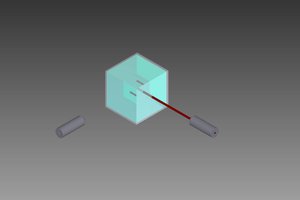
waldian is a standalone, wall hanging sound and light fixture capable of playing a near infinite amount of melodic permutations over a predetermined musical scale, complemented by emerging light patterns from twelve separate LEDs spread across the sculpture, all running on an external 15V AC adapter. In technical terms, waldian contains two oscillators, an envelope generator and a voltage controlled amplifier, all controlled by impulses from a network of logic gates. These impulses are essentially the nerves in the electronic ecosystem, deciding over pitch and amplitude changes as well as creating bursts of light to highlight the entrances of each note. Finally, there is a tube overdrive stage that creates harmonics and subharmonics based on how far away the two oscillators are from each other in frequency. Most parameters are customizable, such as the aforementioned pitch, amplitude and overdrive, but the responsiveness and envelope of the light bursts can also be adjusted, directly affecting the appearance of the light patterns.
The sculpture derives its visual form from basic geometric shapes, intersecting and overlapping, reminiscent of suprematist art from the modernist era. The purpose of the freeform circuit construction style is two-fold, namely to highlight the intrinsic beauty of electronic components and the circuits they comprise, and to increase the transparency of the interal processes of the circuit. The first point is in no need of further explanation, but overlaps with the second regarding layout and mechanical support: the sculpture is built with functionalist principles in mind, and thus each component and wire has a specific role contributing to the structural integrity and overall purpose of the circuit – which becomes apparent should one follow each wire from its source to its destination. The design is therefore to an extent a result of function, not form. The essence of the second point about transparency could also easily be overlooked due to being so closely intertwined with what the sculpture is perceived to be actually doing, which is to create visual and auditory clues directly tied to its decision-making process. One could regard each burst of light and sound as a result of this process, but they really are real-time manifestations through sonification and visual feedback of the sculpture’s inner workings, and an attempt at communicating its processes as transparently as possible to an audience.
Lastly I just want to add that although the schematics are included below, it was never intended to be anything else than a reference for myself should I ever need it in the future. There might be mistakes, inaccuracies or straight up missing pieces of information, so don't follow it blindly if you plan on using parts of it for your own projects.



 James Cannan
James Cannan
 maildodanillo
maildodanillo
 trax
trax
Simply a beautiful piece of art. Congratulations on winning the circuit sculpture contest!!!